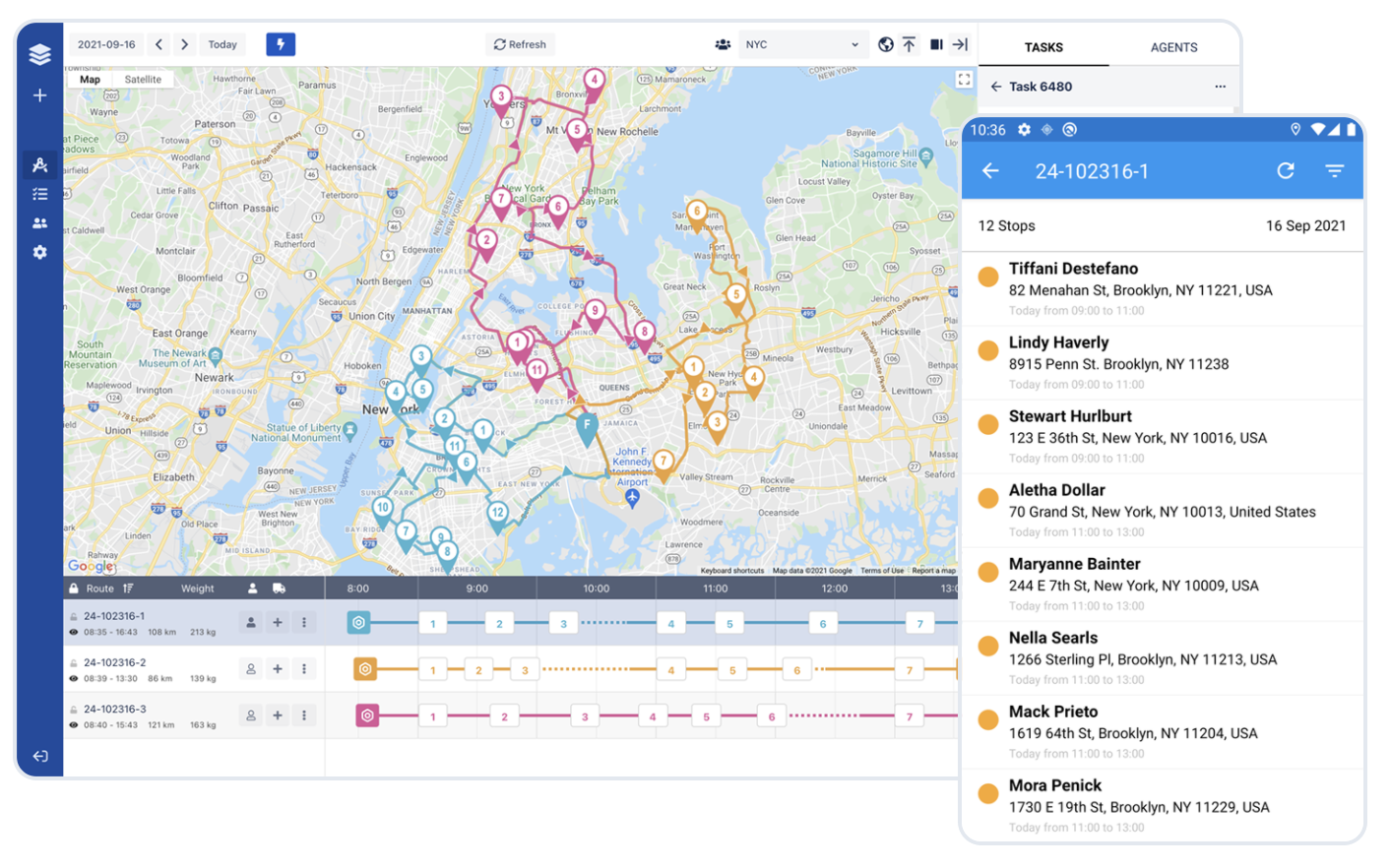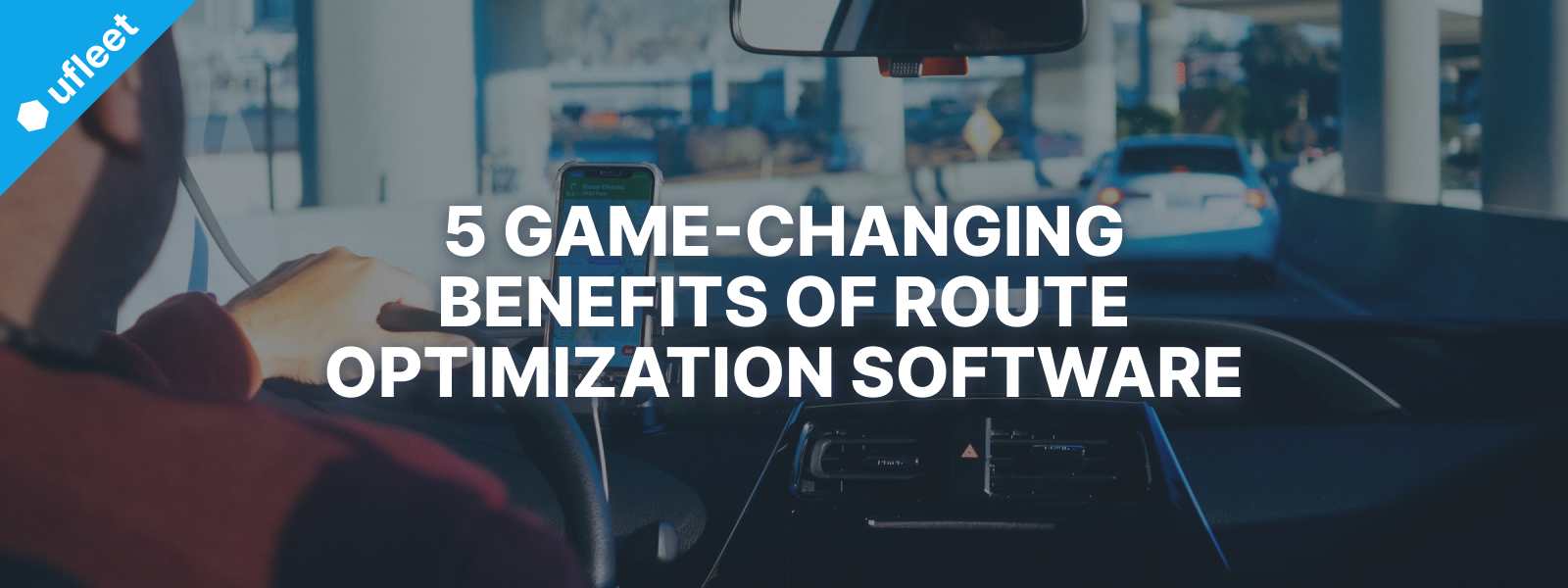For courier companies, driver churn is a huge problem that throws route planning, customer service, and costs into chaos. Here's how to solve it.

Hiring drivers isn’t the hard part. Hiring skilled, reliable drivers who stay more than three months is. For courier companies, driver churn is a huge problem that throws route planning, customer service, and cost control into chaos.
To help you win the battle against the lack of talent and the high percentage of driver churn, we gathered five specific and high-impact tips. By the end of this blog post, you should have gained at least a few ideas on how to hire and retain skilled delivery drivers more easily.
1.Invest in Technology and Future-Proof Your Deliveries
Nobody likes to work in an outdated environment. Yet, most small to mid-sized courier operations still rely heavily on printed papers, spreadsheets, and manual handoffs between dispatchers and drivers.
While this may not seem like a big deal, it creates friction that experienced drivers quickly notice and often walk away from. What skilled delivery drivers look for is a streamlined, structured workflow: automated route planning, mobile navigation apps, proof-of-delivery systems, and real-time communication tools.
According to WorkHound’s 2023 industry survey, disorganized dispatching and lack of operational tech were cited as top reasons for quitting by 56% of surveyed drivers. Tech signals professionalism and progressive thinking. It also reduces the cognitive load and frustration that come from unclear instructions, repetitive paperwork, and inefficient handoffs.
You don’t need to implement expensive enterprise-level systems overnight. Start small with free route optimization software like Ufleet, and upgrade to paid plans when you need to.
This will not only improve the driver’s daily experience but also show that you’re a business trying to evolve. Drivers talk. The ones you want - skilled, experienced, and dependable - notice when a company is upgrading its systems and culture. Technology will also reduce your delivery costs, and your end-customers will notice and love it too!
2.Make Stay Interviews a Regular Practice
Once a driver quits, you’ve already lost money. Hiring, onboarding, and early churn costs can exceed $4,000 per employee according to the National Private Truck Council. The problem is that courier companies often don't address problems before it's too late. That's why the so-called "stay interviews" are a proactive tool to reverse that.
These should be lightweight, recurring conversations. Every month or quarter, ask drivers what’s working well, what’s frustrating them, and what would make them stay long term. Keep it casual and make them feel safe to share their thoughts. It should not feel threatening or like it's a performance review. What you’re looking for are early warning signs: signs of burnout, unmet expectations, or misalignments between the driver’s lifestyle and your operation’s demands.
What gets uncovered is often fixable: poor vehicle condition, uneven dispatch loads, or unresolved customer complaints. Document the insights and act upon what you've learned. When multiple drivers flag the same issue, act even faster. SHRM reports that companies that implement stay interview frameworks see 10–20% drops in voluntary turnover within the first year.
3.Compete on Pay, But Also on Route Stability
It’s tempting to believe that raising wages will fix churn. It might be a temporary solution, but in the long term, someone who's unhappy will quit even with a pay raise. For most drivers, the decision to stay is not only based on money, but on other factors as well. Inefficient processes, unexpected shift changes, frequent mistakes, and poor communication destroy trust, no matter the hourly rate.
The best courier companies realize this and start treating route stability as a retention feature. Provide regularity in geography, hours, and load profiles. A driver who starts at 8 a.m., finishes by 5 p.m., and serves the same territory 3–5 days a week will almost always outperform and outstay a peer who’s sent somewhere new daily.
According to a 2022 study from FreightWaves, 61% of drivers would take slightly lower pay in exchange for consistent schedules and zones. Why? Because it allows them to plan childcare, side work, rest days, and even basic personal routines. Unpredictable scheduling creates friction and chaos. Of course, changes are sometimes necessary, but if you can provide a predominantly stable and predictable working environment, delivery drivers will appreciate it.
4.Create a Career Growth Path for Your Drivers
In small and mid-sized courier firms, it’s easy to assume advancement opportunities don’t exist. But this is a false assumption and a dangerous one. Skilled drivers leave when they see no opportunities to grow professionally and financially.
Start by mapping internal contributions that add value beyond the wheel. Assign peer mentorship roles for onboarding, for example. Rotate safety review responsibilities. Delegate returns auditing or staging assistance. It's not a corporate ladder, but you're creating opportunities for additional contribution.
Offer tangible incentives. An experienced lead driver who trains new hires or someone who is tasked with reviewing stop logs can get a pay raise and a new title. If a pay raise is not affordable for you, even a one-off bonus is something your drivers will appreciate.
The 2023 State of the American Driver Report found that companies offering growth opportunities, even informal ones, retained mid-tenure drivers (6–18 months) at rates 24% higher than companies without clear internal advancement.
If you’re struggling to keep drivers after the 6-month mark, chances are it’s not only about wages. It’s about whether they see a future.
5. Make Drivers Part of the Ops Loop
Drivers are the employees who see every customer, every delivery site, and every road. Ignoring their observations and feedback is a huge mistake. Yet in many small courier businesses, communication is one-way. Dispatch assigns. Drivers execute. Nobody debriefs. This turns your most informed field team into passive labor.
Fix this with simple operational rituals such as:
- Collect weekly driver feedback via short forms or voice memos.
- Hold 15-minute roundtables or one-on-ones monthly.
- Review problem stops or delivery zones with drivers present.
What you’ll discover are recurring route issues, parking constraints, difficult customers, unsafe zones, and preventable stressors. These insights can shape route planning, customer service expectations, and even sales promises.
Trucking HR Canada reported a 38% increase in driver engagement when companies actively closed the feedback loop, i.e., not just collecting input, but showing how it informed decisions. Start with one route change or one policy tweak driven by driver input and communicate it clearly. That one small loop builds long-term buy-in.
Final Thoughts
Driver churn is rarely about the drivers. It’s about the system they operate in, such as routes, expectations, tools, and how they’re treated in the loop.
Hiring more people into the same broken system won’t solve anything. The courier companies that thrive build environments that skilled drivers want to stay in.
Start with better scheduling. Layer in basic technology. Add role-based growth and two-way feedback. None of these are luxury moves. They’re foundational fixes.
And in a labor market this tight, they’re not optional either.
Never miss a post
You may also like…
You too can reduce costs and improve efficiency with Ufleet
- plan and optimize delivery routes
- manage and empower drivers
- enhance customer experience
- make data-driven business decisions
We’d love to learn about your challenges.
Leave your email and we’ll get back to you.





